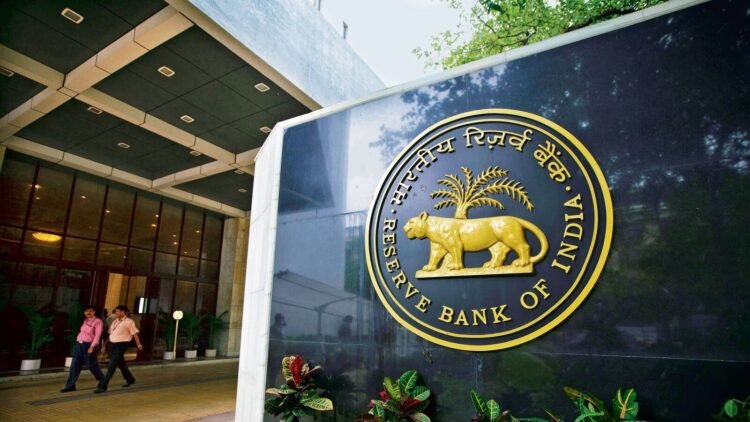RBI’s September 19 auction will infuse Rs. 1 lakh crore into the system for a single day.
MUMBAI (India CSR): In a move aimed at managing short-term liquidity in the economy, the Reserve Bank of India (RBI) has announced it will conduct an overnight Variable Rate Repo (VRR) auction under its Liquidity Adjustment Facility (LAF) on Monday, September 22, 2025.
This decision comes amid ongoing assessments of the country’s liquidity conditions, which refer to the amount of cash available in the banking system for lending and daily operations.
For everyday folks, think of this as the RBI acting like a financial plumber – ensuring money flows smoothly without clogs or floods that could hurt businesses, loans, or even your savings account interest rates.
Rs. 1 lakh crore into the system for a single day
The auction, detailed in a press release issued by RBI’s Deputy General Manager (Communications) Ajit Prasad on September 19, 2025, is designed to infuse up to Rs. 1,00,000 crore (that’s Rs. 1 lakh crore) into the system for just one day. This short-term injection helps banks borrow money from the RBI at competitive rates, preventing any sudden cash shortages that might push up borrowing costs for everyone.
What Exactly is Happening? A Simple Breakdown
To make this accessible, let’s break down the jargon step by step:
- What is a Repo Auction? “Repo” stands for Repurchase Agreement. It’s like a short-term loan where banks sell government securities (safe assets like bonds) to the RBI and promise to buy them back soon, usually with a bit of interest. In this case, it’s an “overnight” repo, meaning the deal lasts just one day – banks get cash on September 22 and return it on September 23.
- Variable Rate Repo (VRR): Unlike fixed-rate repos where the interest is set in advance, VRR lets banks bid on the interest rate they’re willing to pay. The RBI accepts the lowest bids first (cheapest for banks), making it a competitive auction. This helps the RBI gauge how desperate banks are for cash and adjust rates accordingly.
- Liquidity Adjustment Facility (LAF): This is the RBI’s toolkit for fine-tuning daily money supply. When there’s too little cash (tight liquidity), the RBI lends via repos like this. If there’s too much, it absorbs via reverse repos. Right now, with this VRR, the RBI is signaling it wants to add liquidity to keep things balanced.
Key details of the upcoming auction:
- Amount on Offer: ₹1,00,000 crore (a massive sum, equivalent to about 0.4% of India’s annual GDP, showing the scale of RBI’s interventions).
- Duration (Tenor): 1 day – super short-term to address immediate needs.
- Bidding Window: From 9:30 AM to 10:00 AM on September 22, 2025.
- Reversal Date: The money must be repaid by September 23, 2025 (Tuesday).
- Rules: The auction follows the same guidelines as outlined in RBI’s January 20, 2022, press release (No. 2021-2022/1572), which ensures transparency, like minimum bid amounts and how winners are selected based on rates.
Banks and financial institutions will submit bids electronically during the window, specifying how much they want to borrow and at what rate. The RBI will allot funds starting from the lowest rate bids until the ₹1 lakh crore is exhausted – or less if bids are low.
***
Why Reference a Recent Auction? Insights from September 19
To give context, the RBI recently held a similar 3-day VRR auction on September 19, 2025, with a notified amount of ₹50,000 crore. However, bids received totaled just ₹390 crore – a surprisingly low turnout, possibly indicating banks weren’t facing acute shortages at that moment. The full ₹390 crore was allotted at a cut-off rate of 5.51% (the highest rate accepted) and a weighted average rate of 5.52% (average across all successful bids). No partial allotments were needed at the cut-off, meaning all bids at that rate got fully funded.
This low participation suggests comfortable liquidity in the system recently, but the RBI’s decision to announce a much larger overnight auction now hints at evolving conditions – perhaps anticipating year-end pressures, festival season demands, or global economic ripples that could tighten cash flows.
***
Economic Importance: Why This Matters for the Average Indian
At its core, this auction is about keeping the economy humming without overheating or stalling. Here’s why it’s crucial for the common man:
- Controlling Inflation and Growth: Liquidity management directly impacts interest rates. If cash is tight, banks charge more for loans (home, car, business), slowing spending and growth. Too much cash can fuel inflation (rising prices for groceries, fuel, etc.). By injecting ₹1 lakh crore overnight, the RBI aims to keep rates stable around its repo rate benchmark (currently around 6.5%, but auctions like this fine-tune it). This helps maintain affordable EMIs and supports job-creating investments.
- Supporting Post-Pandemic Recovery: India’s economy has been rebounding, but challenges like global supply chain issues or monsoon variability can cause liquidity hiccups. Actions like this ensure banks have enough to lend to farmers, small businesses, and consumers – think easier access to crop loans or personal credit during festive shopping spikes.
- Broader Stability: In tough times, like during COVID-19, RBI flooded the system with liquidity to prevent bankruptcies. Now, with inflation in check (around 5-6% recently), this targeted approach prevents asset bubbles (e.g., stock market crashes) or currency volatility that could weaken the rupee and make imports costlier.
For families, it means steadier prices at the market, more predictable savings returns, and a buffer against economic shocks. Economists view this as the RBI’s proactive stance in a volatile world, where events like US Fed rate hikes or oil price swings can spill over to India.
***
Market Importance: What It Means for Investors and Businesses
From a market perspective, this auction is a key signal for traders, investors, and corporates:
- Bond and Money Markets: Yields on short-term bonds (like treasury bills) often move in tandem with repo rates. A successful auction with low bid rates could signal easing liquidity, potentially lowering yields and making government bonds more attractive. Conversely, high rates might indicate tightness, pushing up costs for corporate borrowing.
- Stock Market Ripple: Banks’ stocks (e.g., SBI, HDFC) could see mild boosts if liquidity eases, as it improves their net interest margins (profit from lending). Broader indices like Sensex might stabilize, especially if this prevents rate hikes that hurt growth stocks in IT or consumer sectors.
- Forex and Global Ties: With India’s forex reserves healthy (over $600 billion), this helps manage rupee fluctuations. International investors watch RBI moves closely – a well-managed liquidity signals confidence, attracting foreign portfolio inflows.
- Business Impact: For companies, especially in cash-intensive sectors like real estate or manufacturing, cheaper short-term funding means better working capital. Small enterprises, often hit hardest by liquidity crunches, benefit indirectly through bank lending.
In summary, while the auction might seem like insider banking talk, it’s the RBI’s way of steering the economy toward steady growth (targeting 7-8% GDP annually) without nasty surprises. Experts anticipate strong participation given the larger amount, potentially at rates around 5.5-6%, based on the recent auction. Keep an eye on RBI’s post-auction results for clues on what’s next – it could shape monetary policy ahead of the October 2025 review.
For more details, visit the RBI website or follow official announcements. This is part of the RBI’s ongoing efforts to foster a resilient financial system for all Indians.
(India CSR)







